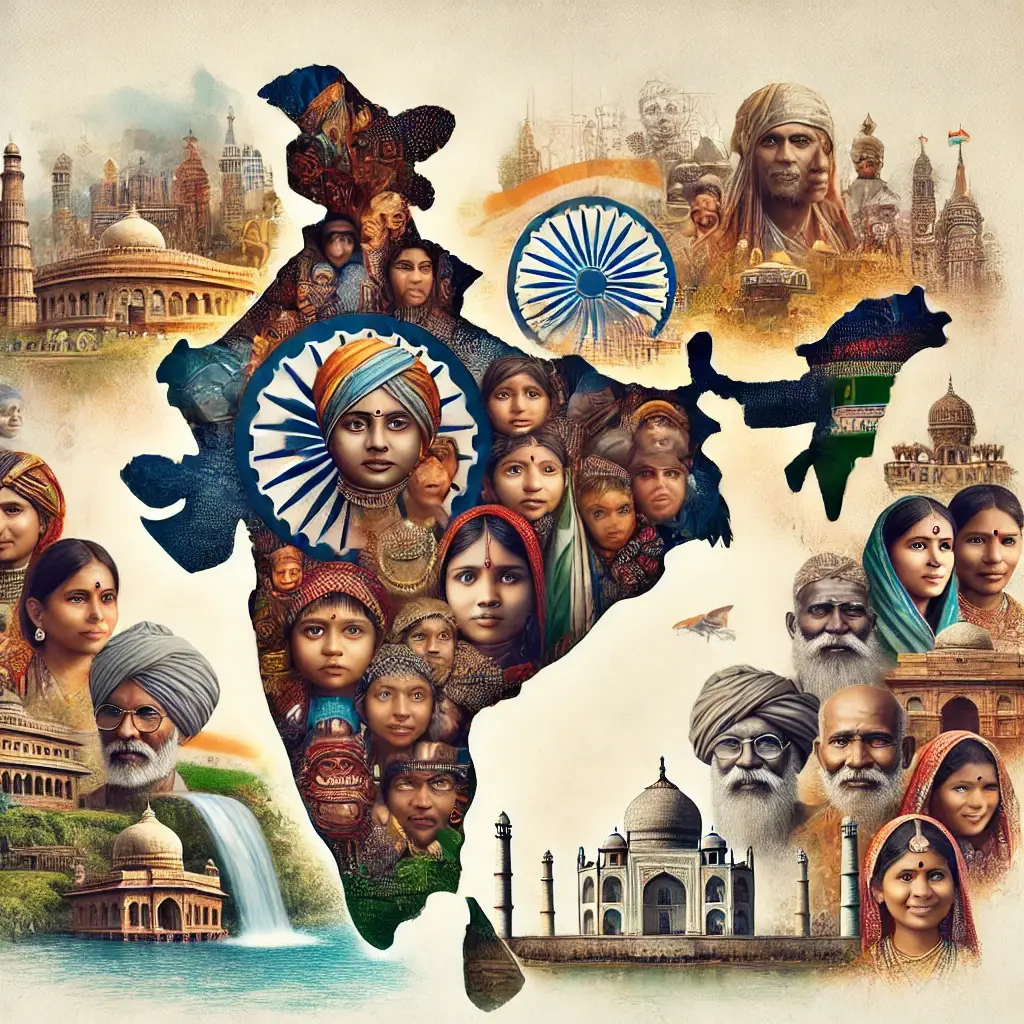
India’s rich history and diverse population have fascinated historians, geneticists, and anthropologists alike. From ancient civilizations to modern migrations, the question of who the people of India really are has been a topic of deep exploration and debate. The popular belief that India’s civilization began with the Aryan invasion around 1500 BC has been questioned and reshaped over time. The discovery of the Harappan civilization, a highly advanced society that existed long before the Aryans, has significantly altered our understanding of Indian history.
Even after this discovery, the Aryan invasion theory didn’t disappear. It was adjusted to suggest that Dravidians (ancestors of modern-day Tamils) built the great Indus cities, which were later destroyed by the Aryans. But there’s no strong evidence to support this invasion story. Instead, it seems the Harappan cities slowly declined as rivers dried up and the environment worsened.
Revisiting the Aryan Invasion Theory
Today, India is a land of incredible diversity, with many different tribes, castes, and languages. Some groups, like Jews, Parsis, and Turks, arrived in historical times, while others have lived here for thousands of years. Over centuries, there has been a lot of movement within India, making it hard to trace where certain groups originally came from. Many have mixed with others, while a few, in places like the Andaman Islands and the North-East, have remained more isolated.
The Genetic Puzzle of India
So, who are the Indians really? Modern genetic studies have given us some exciting clues. It turns out that Indians are a blend of two main ancestral groups: Ancestral North Indians (ANI) and Ancestral South Indians (ASI). The ANI share roots with Europeans and Central Asians, while the ASI are unique to the Indian subcontinent. These groups have mixed for over 10,000 years, creating the vast variety of people we see today.
The Diversity of Modern India
Interestingly, even in the south, which is usually associated with the ASI, there are still about 40-50% ANI genes. So, while the north has more ANI influence, both ANI and ASI genes can be found throughout India. Importantly, there is no such thing as a “pure” population—Indians have always been a mix, showing that our history is one of constant connection and exchange.
What DNA Reveals About Indian Ancestry
A fascinating find is the R1a1 gene, shared by North Indians and Eastern Europeans. This points to a distant shared ancestor, probably from the Gujarat-Sindh region, more than 8,000 years ago. This doesn’t mean there were huge migrations later—it’s more likely that ancient climate changes or other factors spread this gene in different directions long before recorded history.
The Broader Indian Identity: From North to South and Beyond
Although this genetic mixing is key to understanding who we are, it doesn’t fully explain the diversity of India. In the northeast and the Himalayan regions, for example, people have genetic ties to Tibeto-Burman groups. And over the centuries, India’s people have continued to evolve, influenced by migrations, trade, and cultural exchanges.
Internal Link Suggestion:
Learn how Gandhi’s principles can tackle today’s global challenges in our Gandhi Jayanti post.
Conclusion: The Identity of India’s People
In the end, the identity of the Indian people is one of profound diversity and shared history. From ancient trade routes to migrations and cultural exchanges, India’s genetic and cultural fabric has continuously evolved over millennia. What remains constant is the uniqueness of each community, contributing to the larger Indian identity.
India is a land where countless peoples have come together over thousands of years. Rather than defining ourselves in terms like “Aryan” or “Dravidian,” it is clearer to embrace the idea that we all share a rich, mixed heritage. Our diversity goes beyond languages and cultures—it’s woven into our very DNA.
So, when we ask who Indians are, the answer is both simple and beautiful: we are a family of many backgrounds and stories, united in one incredible country. As highlighted in Sanjeev Sanyal’s engaging book, Land of the Seven Rivers: A Brief History of India’s Geography, this rich mix of identities forms the foundation of what it means to be Indian.